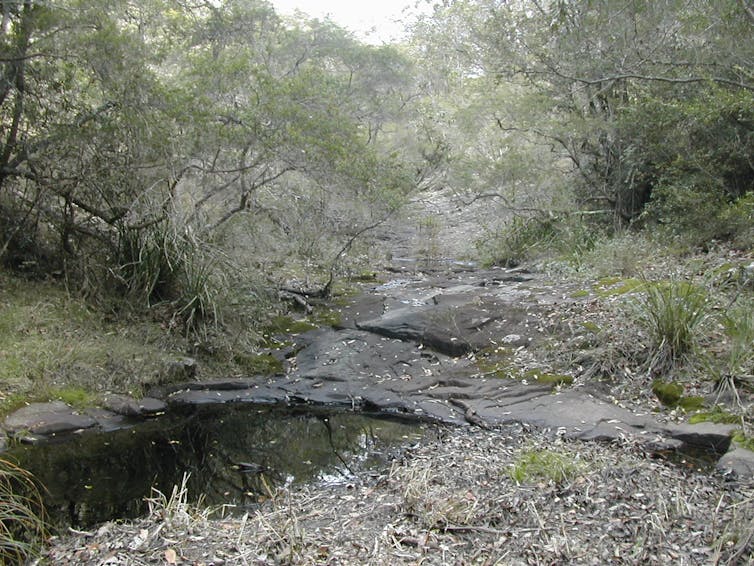Australia has about 135 species of freshwater crayfish - and we’re still describing more. Case in point are the Cherax group of crayfish, which includes the critically endangered Hairy Marron from Western Australia, and Leckie’s Crayfish (Cherax leckii) from New South Wales. There are around 25 known species, and two were only described this year.
It might seem a bit odd that we are still discovering new species in a genus that includes some of the best known crayfish in the country, such as yabby, marron and redclaw. But there are still plenty of other unresolved mysteries in the group.
Leckie’s Crayfish is a perfect example of how little we still know. While many Cherax species such as the yabby are rather widespread, others appear to be far more restricted. Leckie’s Crayfish is a small crayfish (a few inches long) known only from its original collection site, in an out-of-the-way national park in northern New South Wales.
This lone site, high up in the hills, is a bit unusual for Cherax crayfish. Usually these crayfish are found in warm, lowland habitat. The stretch of stream where Leckie’s Crayfish lives is very limited, and underlain by solid basalt which means there’s little opportunity for digging burrows, apart from in the stream banks.
Status
Despite much sampling throughout the region, Leckie’s Crayfish has never been found outside of the original remote, highland site.
This highly restricted, highland distribution is an important factor in its listing as critically endangered on the IUCN Red List.
Threats
A restricted distribution renders a species particularly vulnerable to minor human impacts such as pollution.
During field surveys we found evidence of erosion and trampling by cattle, which have direct access to the stream. The tiny area of habitat could also be affected by eutrophication (algal growths). Other feral species such as cane toads and pigs could impact on Leckie’s Crayfish.
Another threat is is over-collection. Because of its small size, Leckie’s Crayfish offers very little for food, unlike yabbies and marron. However, there is another category of collecting: a crayfish enthusiast – for sport, for the outing, or for the fish tank. Unfortunately, the remote location and rarity of the species probably heighten the stakes for those who undertake this type of collecting.
As for other critically endangered species like rain crayfish and spiny crayfish, climate change is an important threat to Leckie’s Crayfish. Because it’s restricted to the very upper headwaters of the catchment, the crayfish could rely on cool conditions. If so, it would be directly affected by climate change.

Strategy
We continue to monitor the species. On a positive note, a return to the site a few years ago confirmed that Leckie’s Crayfish still survives. There are a couple of other Cherax species that were described once and then vanished into obscurity, never to be seen again. Monitoring of Leckie’s Crayfish needs to continue, to make sure it doesn’t similarly disappear off the radar.
More importantly, there is an urgent need for further research on the species, to ensure that we understand its biology sufficiently to be able to protect it into the future.
Some of the questions that need to be answered for Leckie’s Crayfish include its tolerance for higher temperatures, susceptibility to increased nutrient inputs, and general life history information. Of course, addressing such questions is exceptionally difficult with a species that is this rare.
Conclusion
Australia has an impressively large freshwater crayfish fauna, including spiny species and burrowing species. But we still don’t know enough about them. Many species are listed on the IUCN Red List as data deficient, meaning we have no idea how they are doing. We have some idea how Leckie’s Crayfish is doing, but we don’t know enough yet to ensure its survival.
The Conversation is running a series on Australian endangered species. See it here

